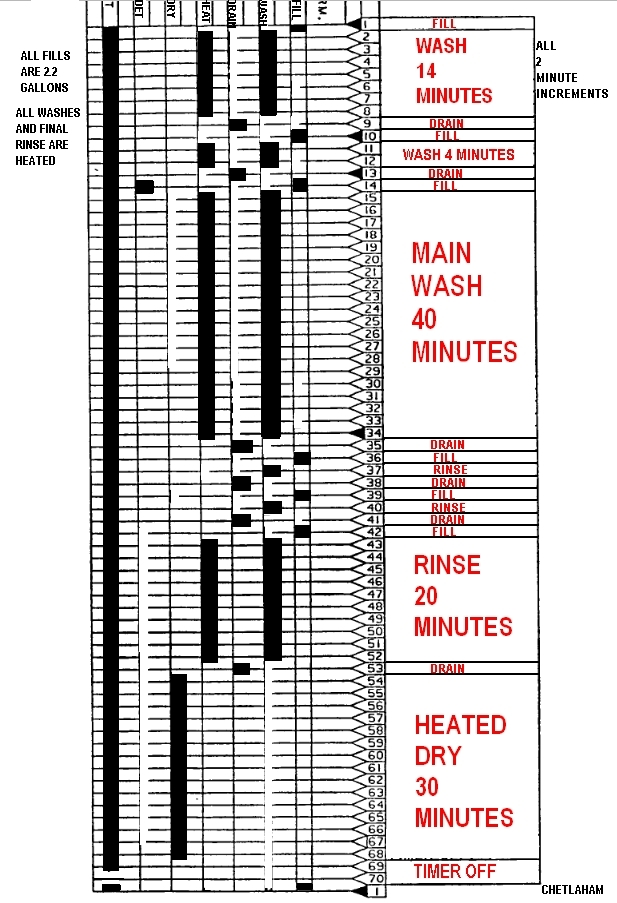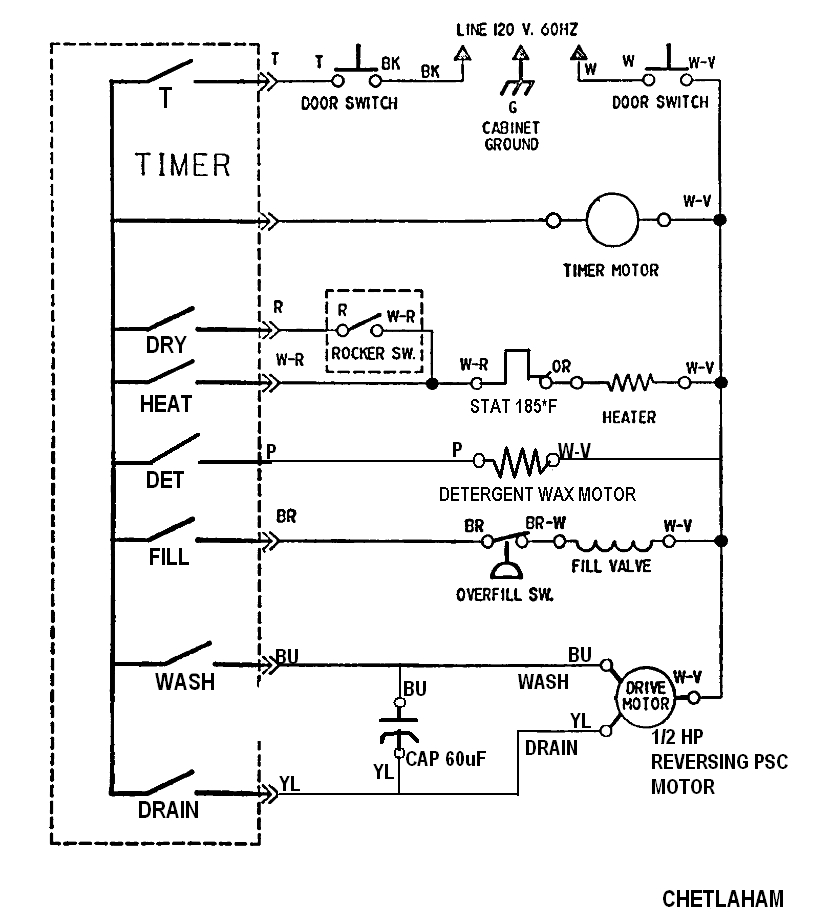I mean why were they so big considering modern dishwashers get dishes clean with a 50 watt motor?
Why not make a two port sump (think plastisol tubs) and add a removable find filter basket? 180 watt wash pump like this:
https://www.ebay.com/itm/GE-Washer-...859077&hash=item48efbcb1f7:g:~4kAAOSwNGNfiKqT
And a 25 watt drain pump like this but in shaded pole version:
https://www.ebay.com/itm/GE-WD19X10...847747?hash=item2393e0f083:g:xygAAOSwLsBZVTHc
Frog eye or cat eye spray arm with small holes. Continuous advancement timer (like on GE machines) where the drain pump starts and the wash motor shuts off 30 seconds latter. Similarly after the drain pump shuts off, fill starts and 30 seconds latter the wash pump comes on.
I think this would have been cheaper, used less water and reduced carry over water found in many designs.
Why not have gone this route? Speed Queen could pull if off today if we wanted a no frill machine but also respected modern design.
Why not make a two port sump (think plastisol tubs) and add a removable find filter basket? 180 watt wash pump like this:
https://www.ebay.com/itm/GE-Washer-...859077&hash=item48efbcb1f7:g:~4kAAOSwNGNfiKqT
And a 25 watt drain pump like this but in shaded pole version:
https://www.ebay.com/itm/GE-WD19X10...847747?hash=item2393e0f083:g:xygAAOSwLsBZVTHc
Frog eye or cat eye spray arm with small holes. Continuous advancement timer (like on GE machines) where the drain pump starts and the wash motor shuts off 30 seconds latter. Similarly after the drain pump shuts off, fill starts and 30 seconds latter the wash pump comes on.
I think this would have been cheaper, used less water and reduced carry over water found in many designs.
Why not have gone this route? Speed Queen could pull if off today if we wanted a no frill machine but also respected modern design.








